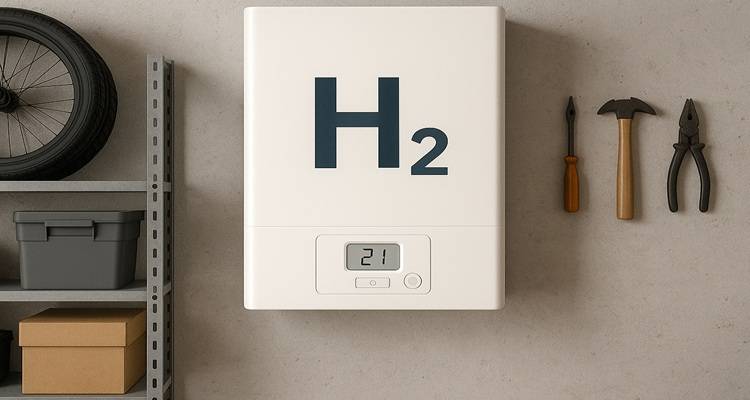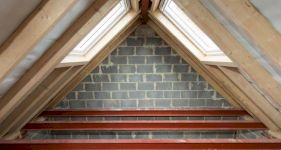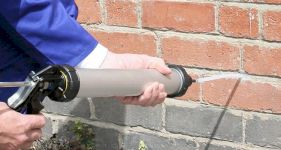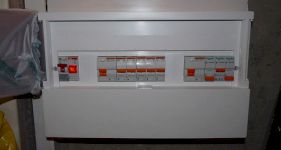LVT Flooring Cost
- The average cost of LVT flooring is around £1,100 in the UK.
- Installing LVT flooring typically takes between 1 – 2 days to complete.
- Our LVT flooring cost calculator.
- LVT flooring costs in 2026 (including LVT prices per m² and labour rates).
- How long the job takes and what's typically involved.
- How to find and hire a local LVT flooring fitter.
Wondering how much LVT flooring costs in the UK?
We’ll break down everything that affects the price, so you know exactly what to expect and can avoid surprises.
Even if you’re not ready to install, understanding the costs helps you make smarter decisions and plan your budget with confidence. Getting a quote isn’t a commitment — it’s simply a way to see what’s realistic for your home.
MyJobQuote can connect you with floor fitters near you who can give you an accurate LVT fitting cost. It's quick, easy, and FREE.
Want more information about LVT and vinyl flooring costs first?
Read our comprehensive guide below!
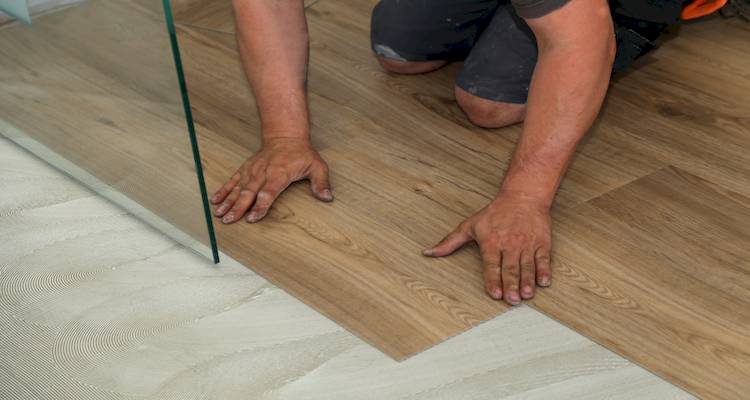
£1,100
Table of Contents
- How Much Is LVT Flooring?
- What is the Cost of LVT Flooring Itself?
- LVT Flooring Labour Costs and Timescales
- What Impacts LVT Flooring Costs?
- What's Involved in a Professional LVT Flooring Installation?
- Can I Lay LVT Flooring Myself?
- Types of LVT Flooring
- Checklist: Hiring Contractors to Install LVT Flooring
- FAQs
How Much Is LVT Flooring?
So, how much does it cost to install LVT flooring in the UK?
The average cost of LVT flooring installation in a medium-sized room (like a living room) is around £1,100.
Approximately half of this cost goes to professional labour, while the remainder covers LVT materials, underlay, and finishing touches such as skirting and thresholds.
The prices for LVT flooring will vary depending on the quality of the materials. You can expect to pay around £15 – £25 per m² for low-end LVT flooring.
If you want mid-quality LVT flooring, this will cost around £25 – £40 per m², and if you would like high-end quality LVT flooring, this will cost around £40 – £60 per m².
Some other things that may affect the cost of this type of work will include the size of the area — the larger the room, the more materials you will need and the longer the job will take, so, therefore, the total LVT flooring cost will be higher.
Also, your location will affect the overall LVT installation cost. Those based in the London area will pay more for a professional to do this type of work than those who are based in other parts of the UK.
What are the most family-friendly types of flooring?
LVT Flooring Prices
The table below shows the average cost of LVT flooring installation cost that you can expect to pay.
| Job Description | Avg. LVT Flooring Cost Per M² |
|---|---|
| Low-End LVT Flooring Fitting Cost | £15 - £25 per m² |
| Mid-End LVT Flooring Fitting Cost | £25 - £40 per m² |
| High-End LVT Flooring Fitting Cost | £40 - £60 per m² |
LVT Flooring Cost Calculator
What is the Cost of LVT Flooring Itself?
If only interested in the cost of LVT flooring itself, without including professional installation, then the price you pay will depend entirely on the quality of the materials.
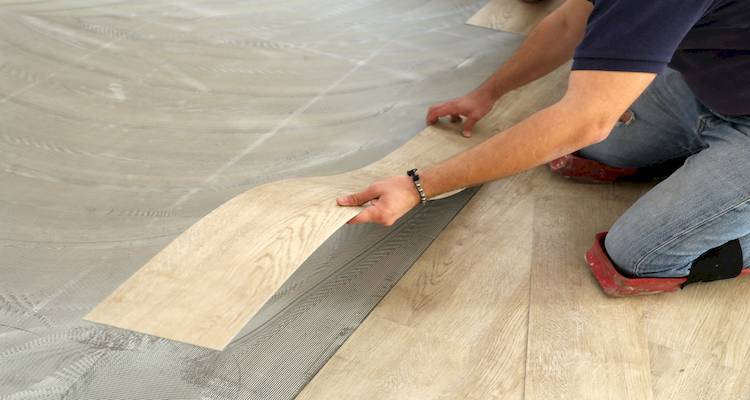
The table below shows typical LVT flooring prices by quality:
| LVT Quality | Typical Price per m² |
|---|---|
| Low-End | £10 – £15 |
| Mid-Range | £15 – £25 |
| High-End | £25 – £40 |
These prices cover the LVT material only. For a complete installation, you would also need to consider underlay, trims, and professional labour, which can significantly increase the total cost.
Our tip: Choosing the right quality depends on both your budget and the room where the LVT will be installed. Higher-quality LVT can last longer and look more realistic, making it a better investment in busy or visible areas.
What flooring is best for dogs?
LVT Flooring Costs by Room
The table below shows the average cost of LVT flooring by room type.
| Room Type | Estimated LVT Flooring Cost (Materials + Underlay) |
|---|---|
| Living Room (17 m²) | £256 - £564 |
| Double Bedroom (13 m²) | £188 - £413 |
| Kitchen (12 m²) | £173 - £380 |
| Bathroom (5 m²) | £68 - £148 |
These estimates include both materials and underlay, excluding fitting costs, which can be found in the previous table.
LVT Flooring Labour Costs and Timescales
Most contractors will be able to provide the supplies for you when it comes to installing LVT flooring. However, in some cases, you may prefer to source the supplies yourself and then hire a contractor to carry out the installation for you.
In this section, we will go over the prices that you can expect to pay for the labour side of installing LVT flooring. The average cost that you can expect to pay for a flooring fitter is around £150 – £250 per day.
Is LVT with integrated underlay any good for uneven floors?
However, the price that you pay will depend on several factors. For example, if you are located in or around the London area, you can expect to pay a contractor more than if you are located in the North or different areas of the UK.
Depending on the size of your floor, you can expect this type of work to take around 1 – 2 days for an average-sized room. If you have a larger room or if you are planning on installing LVT flooring in more than one room, then the work may take a few extra days to complete.
What Impacts LVT Flooring Costs?
Several factors can affect the overall cost of installing LVT flooring. Below is an overview of the things that may affect the price of this type of work.

LVT Flooring Quality
The quality of the flooring can affect the overall cost of the job. Higher quality materials will cost more, which will increase the overall cost of the job.
There are many different types of LVT flooring tiles, and each of these comes at a different price point. For instance, Karndean flooring costs up to £50 per m², as it's a premium LVT flooring brand.
It's a good idea to have a budget in mind before you start searching for your chosen flooring so that you don't end up overspending.
We are building an open-plan kitchen and diner and are looking for a good quality vinyl floor. Do you have any luxury vinyl floor recommendations?
Underlay Installation Cost
Installing underlay under your new LVT flooring is essential to ensure the floor doesn't sink or shift. Underlay prices can vary depending on the quality, the area you need to cover, and the type of subfloor.
On average, you can expect to pay around £3 to £8 per m² for LVT flooring underlay. Investing in a higher-quality underlay can be worthwhile, as it improves comfort underfoot (even for hard LVT flooring types), reduces noise, protects your flooring from wear, and can be compatible with underfloor heating.
The type of subfloor also affects the underlay you should choose. For ground floors or areas prone to moisture, a damp-proof or moisture-resistant underlay helps prevent condensation and protects both the LVT and the subfloor. Concrete or screed subfloors typically require this type of protection, whereas existing wooden floors may only need a standard underlay, though thicker or acoustic underlays can help even out small gaps and reduce noise.
Choosing the right underlay ensures your LVT flooring lasts longer, feels better underfoot, and performs well in your specific room conditions.
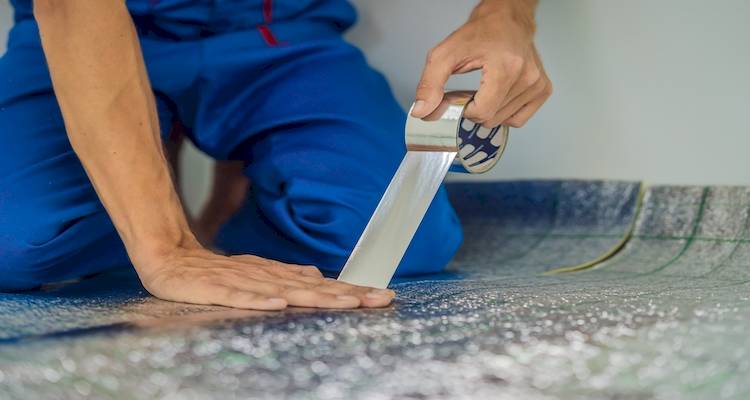
Size of the Room
The size of the room will also affect the overall cost of the job. The larger the room is, the longer it will take to install the LVT flooring. This means that the labour costs will be higher for larger rooms. Also, larger rooms will require more materials than smaller rooms, which can also affect the job's overall cost.
Room Shape and Complexity
The simple per-square-metre price doesn't always tell the whole story. The shape of your room and any fixed features can significantly influence the final cost of both materials and labour.
- Standard Rectangular Rooms: Installation costs are most straightforward in a simple four-cornered room. This allows for efficient work with minimal material waste, keeping labour costs in the typical £20–£30 per m² range.
- Irregular or L-Shaped Rooms: These require more complex measurements and cuts to fit around corners. This can increase material waste and raise labour time by 10–20%.
- Rooms with Obstacles: Fitting LVT around features like kitchen islands, fireplaces, built-in wardrobes, or radiator pipes demands precision cutting. This adds to the labour time and increases material wastage.
- Intricate Layouts (e.g., Herringbone): These popular patterns require a high level of skill and are far more time-consuming than standard plank layouts. Expect labour costs to be significantly higher, often in the £35–£50 per m² range, due to the complexity and expertise involved.
Our Tip: When getting a quote, always provide a sketch of the room's layout or photos, clearly highlighting any obstacles. This will help fitters give you a much more accurate and reliable estimate from the start.
Location of Your Property
The location of your property will play a part in the price you pay to lay LVT flooring. People who are based in and around the area of London can expect to pay more for the work than those based in the North or other parts of the UK. This is true for all types of home improvement jobs in this area.
Additional LVT Flooring Costs
Several additional costs may come with installing LVT flooring. Below is a list of the additional things you may need to budget for with this type of work.
Waste Removal
Most LVT flooring fitters will provide waste removal as part of the job. However, in some cases, they may not. If you need to hire someone separately to take care of the waste removal of your old flooring, then you can expect to pay around £100 - £150 for this type of work.
Alternatively, you could consider hiring a skip to remove any waste that's generated. Skip hire prices are typically around £220, but the cost of skip hire is dependent on the size of the skip that you need, the length of time you need it for, and where you're located in the UK.
Fitting Skirting Boards
While you're getting your new flooring fitted, you may also want to consider installing some new skirting boards to further improve the room's look and completely finish off the flooring space.
Installing skirting boards will usually take around half a day or may take up to a day to complete, depending on the size of the room. On average, skirting board costs between £150 - £200 for an average medium-sized room — which is based on a typical cost of around £30 per m².
Painting and Decorating
As well as installing new flooring, you may also be interested in painting or decorating the room to further improve its appearance. While you can decorate it yourself as a DIY project, many people prefer to hire a professional to take care of this type of work.
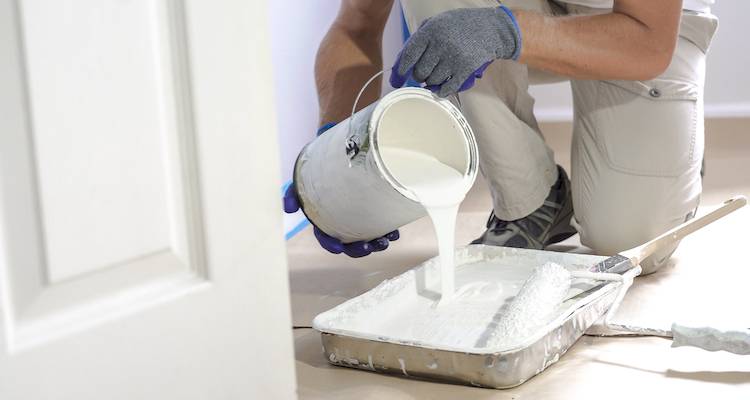
The average cost to paint a room is between £400 – £700 for a room that's between 15m² – 25m².
The exact cost will depend on the type of finish you're looking for, your location in the UK, the size of the room you're decorating, and whether it's an unusual space.
What's Involved in a Professional LVT Flooring Installation?
Understanding the key stages of a professional installation will help you know what to expect when you hire a tradesperson. A quality LVT floor requires careful preparation and precise fitting to ensure a perfect, long-lasting finish.
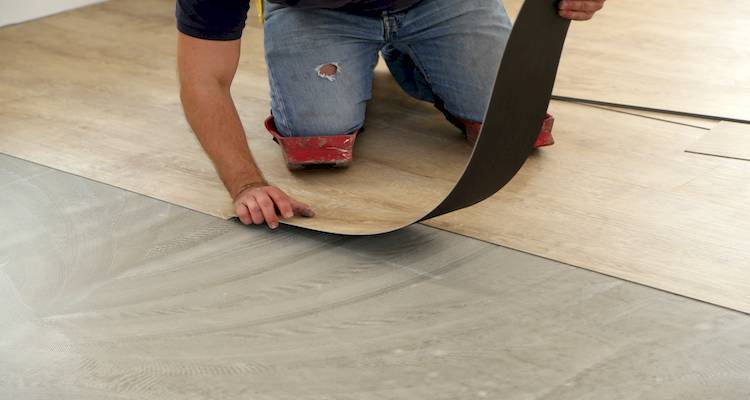
Here is an overview of the process a professional fitter will typically follow:
Subfloor Preparation
This is the most critical stage for a flawless result. The fitter will:
- Clear the Room: The room will need to be completely empty of furniture and the old flooring will be removed.
- Inspect and Level the Subfloor: The fitter will check if the subfloor (be it concrete, wood, or tile) is clean, dry, and perfectly flat. Any imperfections can show through the final LVT.
- Correct Imperfections: If the floor isn't level, the fitter may need to sand down high spots or apply a self-levelling compound to fill in dips and create a smooth surface. This step is essential and non-negotiable for a professional finish.
Acclimatisation of Materials
LVT needs to adjust to the temperature and humidity of the room it will be laid in. Your fitter will ensure the flooring planks or tiles are left in the room for at least 48 hours before installation. This prevents the flooring from expanding or contracting after it has been laid, which could otherwise lead to gaps or buckling.
Laying the Underlay
A specific LVT underlay is installed over the prepared subfloor. This isn't just a layer of foam; it provides crucial support for the click-lock joints, helps with sound insulation, and ensures the floor feels solid and comfortable underfoot.
Fitting the LVT Flooring
With all the preparation complete, the expert fitting can begin.
- The fitter will start along the longest wall, carefully planning the layout to ensure a balanced look with minimal waste.
- They will use spacers to leave a small expansion gap around the perimeter of the room. This is vital to allow the floor to expand and contract naturally with temperature changes.
- Each plank or tile is then expertly clicked into place or glued down (depending on the type of LVT), with precise cuts made to fit perfectly around door frames, pipes, and any other obstacles.
- Once the main floor is laid, the fitter will complete the job by installing skirting boards to cover the expansion gaps, and fit matching threshold bars in doorways for a seamless transition to other rooms.
Can I Lay LVT Flooring Myself?
It is possible to install LVT flooring yourself. As long as you have some basic DIY skills and you possess the materials and tools needed to complete the work, but achieving a high-quality, long-lasting finish is not always straightforward.
A professional installation helps:
- Achieve a flawless appearance: Precise cutting, alignment, and pattern matching ensure the floor looks seamless, especially around corners, obstacles, and doorways.
- Ensure long-term durability: Proper installation prevents planks from lifting, shifting, or cracking, reducing the risk of costly repairs later.
- Maximise lifespan: Using the correct underlay and installation techniques suited to your room and subfloor helps your LVT floor maintain its finish for years.
- Save time and stress: Professionals can complete the work efficiently, avoiding the frustration of mistakes or delays.
If you don't complete the work properly, you may damage your flooring, or you may find that the boards become loose or crack over time. This may mean that you'll end up paying much more for the work than if you were to just hire a contractor to complete it for you.
LVT flooring brands seem to vary a lot with wear layers. What depth of wear layer would you say is suitable for a family kitchen?
For the best results, it's always best to leave this type of work to a professional floor fitter. This type of contractor will have experience, skills and knowledge associated with fitting this type of flooring, so you can rest assured knowing that the job will be done right and to a high standard.
Types of LVT Flooring
LVT flooring tiles come in two main designs: wood-effect and stone-effect tiles.
It is designed to be an alternative to stone or hardwood floors, so the tiles come in many variations of these two types.
Wood Effect LVT Flooring
Wood-effect LVT flooring is designed to imitate hardwood flooring. With so many different types of hardwood flooring options on the market, there are also many different wood-effect LVT flooring options available.
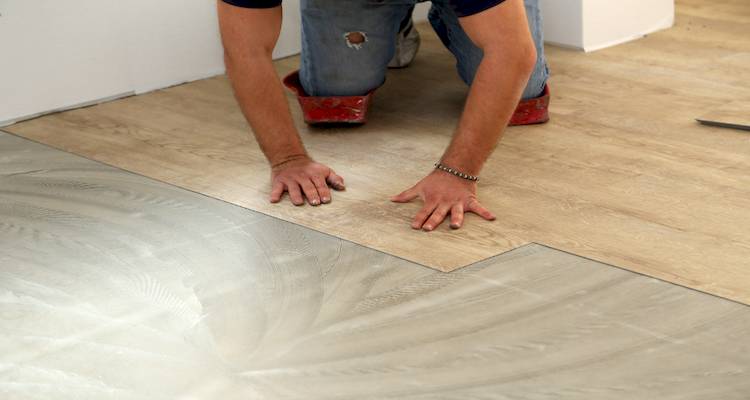
The designs vary in shades, patterns, and colours to imitate the exact type of wood flooring that they are supposed to look like. For example, pine flooring comes in quite light and natural shades, which can add a lot of warm light to a room.
Stone Effect LVT Flooring
There are many different types of stone shades, patterns, and colours when it comes to natural stone materials. With this in mind, there are many different variations of stone-effect LVT flooring tiles. You can get grey, brown, black, and white LVT flooring, among many other colours.
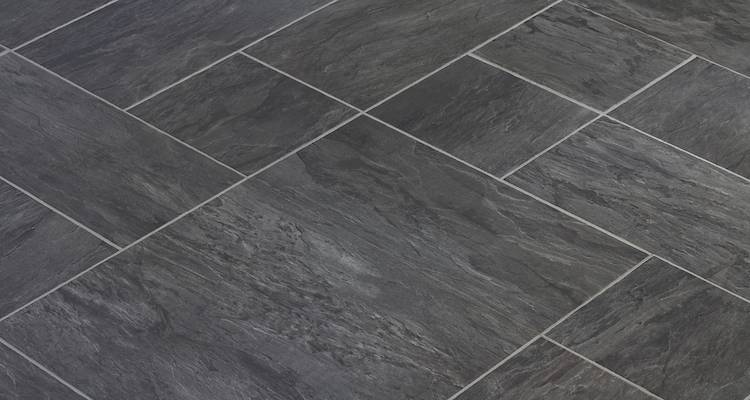
You can find light-coloured stone-effect LVT floor tiles that add a lot of natural light to a room, or you can find darker LVT stone floor tiles that add a much more dramatic effect to the room.
You can find these different styles and colours of floor tiles in all different application methods. Thicker versions provide a softer feeling under the foot. Stone-effect LVT flooring is perfect for rooms such as the bathroom and kitchen.
Click vs Glue-Down LVT
In addition to style, LVT flooring comes in two main installation methods: click and glue-down. The right choice will depend on your budget, the room you’re fitting, and whether you want a faster installation or a more permanent finish.
| Type | Overview | Best For | Cost Impact |
|---|---|---|---|
| Click LVT (Floating Floor) | Pieces lock together with a click mechanism. No adhesive required. Can be laid over most existing subfloors with an underlay. | DIY-friendly, upstairs rooms, rented properties (easier to remove). | Usually faster to fit, so lower labour costs . Slightly higher material cost than glue-down. |
| Glue-Down LVT | Adhered directly to the subfloor using specialist adhesive. Provides a stable, permanent finish. | High-traffic areas, kitchens, bathrooms, commercial use. | More time-consuming to install, so higher labour costs . Materials can be cheaper than click LVT. |
Click LVT is often preferred for quick installations and areas where flooring might need replacing in the future, but is typically a little more expensive to buy.
Glue-down LVT provides superior stability and longevity, especially in rooms exposed to moisture or heavy footfall. It's cheaper to buy, but but may cost more to install.
Cost Comparison
The type of LVT flooring you choose not only has an impact on the cost, but also the overall look and feel.
| Type | Low-End | Mid-End | High-End |
|---|---|---|---|
| Wood-Effect LVT | £10–£15 per m² | £15–£25 per m² | £25–£40+ per m² |
| Stone-Effect LVT | £12–£18 per m² | £18–£28 per m² | £28–£45+ per m² |
Wood-effect tends to have slightly lower entry-level costs, while stone-effect can be more expensive at the premium end. Installation costs are usually similar for both types.
Checklist: Hiring Contractors to Install LVT Flooring
When you decide that you want to install LVT flooring in your home, you’ll need to find the right contractor for the job. Below, we have provided a list of the questions that you should consider asking when finding the right contractor for this type of work.
- Does the contractor have any qualifications that relate directly to installing LVT flooring?
- What type of equipment will the contractor use to complete the job? Will they use the correct type of equipment? Do you need to provide any equipment?
- Does the contractor have any type of insurance for the work? You should look out for contractors who hold insurance that covers property damage, personal injuries, and a work guarantee
- How much experience does the contractor have in fitting LVT flooring? Can the contractor provide any testimonials or evidence of their previous work? Can they provide any photos of previous work?
- Does the contractor provide any guarantees with their work? How long does the guarantee last? What issues, if any, are covered under this guarantee? Will the contractor fix any issues that come up?
- How long in total will the work take to complete?
- Will there be more than one contractor working on the job?
- Is there anything that you need to do to prepare for the job?
- Will the contractor take care of any waste removal that may be needed as part of the job, or do you have to take care of the waste removal yourself?
FAQs
What is LVT flooring?
This is quite a new product and is one of the fastest-growing types of flooring on the market. They are very popular in rooms where water is present, such as the kitchen or bathroom.
How do you clean LVT flooring?
It is recommended that you clean LVT flooring around once or twice a week, depending on how much the floor is used. Always aim to clean up spills as soon as they happen to stop them from setting.




